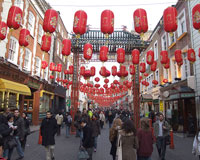 Samuel “Sammy” Tak Lee’s lowball 888p per share offer to buy 9.3% of Shaftesbury and increase his stake to 13.2% was firmly rejected by the board on 21 July. This is perhaps no surprise given that the offer was only 2% above the share price when it was made on 13 July. Shares subsequently shot up and are currently hovering around 930p.
Samuel “Sammy” Tak Lee’s lowball 888p per share offer to buy 9.3% of Shaftesbury and increase his stake to 13.2% was firmly rejected by the board on 21 July. This is perhaps no surprise given that the offer was only 2% above the share price when it was made on 13 July. Shares subsequently shot up and are currently hovering around 930p.
As one investment banker put it at the time: “I don’t know whether it’s just that he is being poorly advised, that he has some massive ego, or maybe he just thinks there is nothing to lose. If he thinks there is going to be serious take-up, though, the guy’s mad.”
Given his love affair with the firm, and his not insignificant 3.9% stake, this is not the end of the road for Lee and Shaftesbury. The owner of the Langham Estate, which comprises 13.8 acres between Oxford Street and Euston Road, sees potential marriage value between Shaftesbury and his existing holdings.
It is understood that at one point last year Lee had a plan to team up with Capital & Counties, owner of the nearby Covent Garden Estate, to make a joint bid for the company and carve up its “villages”, with Lee taking areas neighbouring his estate north of Oxford Street and Capital & Counties taking those closer to its holdings. The plan failed to gain traction, however.
If Lee were to make an offer for the whole company, it is unlikely he would have the personal wealth to do so on his own.
Building a stake in Shaftesbury could be a move made in the belief that a bid for the whole company is likely to be forthcoming and, in which case, Lee’s stake could be turned at a tidy profit. It is understood that an Asian investor has in the past few weeks engaged advisers for early-stage assessments of the company.
“This could be a stalking-horse move by Lee, with someone else in the background looking to initially flush out some smaller shareholders,” says one corporate adviser.
The motivation for such a bid, despite a significant premium undoubtedly being necessary in order to be successful, is, in part, offset by the same ferocity of competition for trophy assets in the open market. Buying Shaftesbury would instantly give an overseas investor a large London real estate business that would otherwise take decades to build up.
Although no longer the largest part of Shaftesbury’s estate, Chinatown is still seen as having particular appeal to investors from the Far East. It has huge potential because of its relatively gritty feel in contrast to its prime location and developing more high-quality residential above shops and restaurants is seen as a major asset management play.
When Lee built his stake in Shaftesbury to around 5% late last year before reducing it, he managed to pocket several million pounds as shares crept up amidst speculation. Another quick exit could see him net an even larger profit on his existing stock, given the dizzying height of the share price, but this would prevent him from gaining any longer-term strategic position.
Although an unconventional move, Lee may just be looking to signal to other prospective interested parties that he would be willing to team up with them were they to make a bid.
While considered by some an eccentric – in 2011, Lee failed in an attempt to have his former mistress, Fuk Wu, charged with blackmail – he is also seen as smart and canny. He has a $2.9bn (£1.9bn) real estate fortune, with a portfolio extending to his native Hong Kong, Tokyo and Geneva.
Whatever his plan, Lee will doubtless have in mind another lucrative payday.










